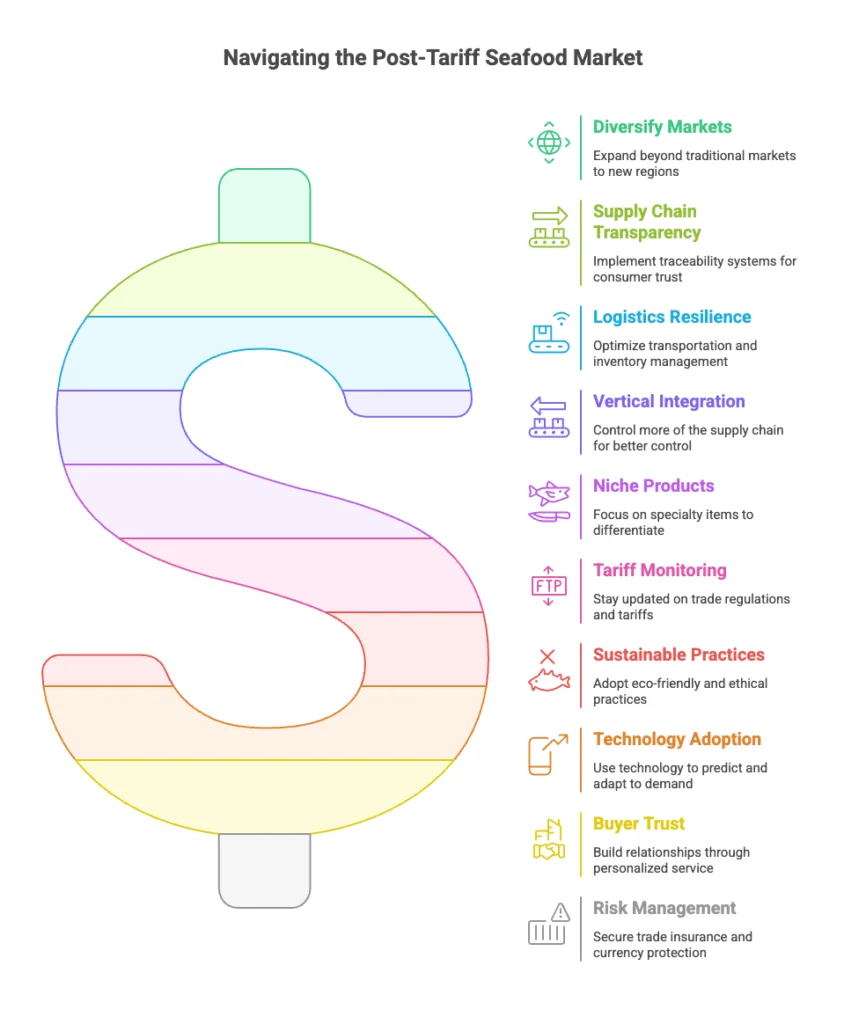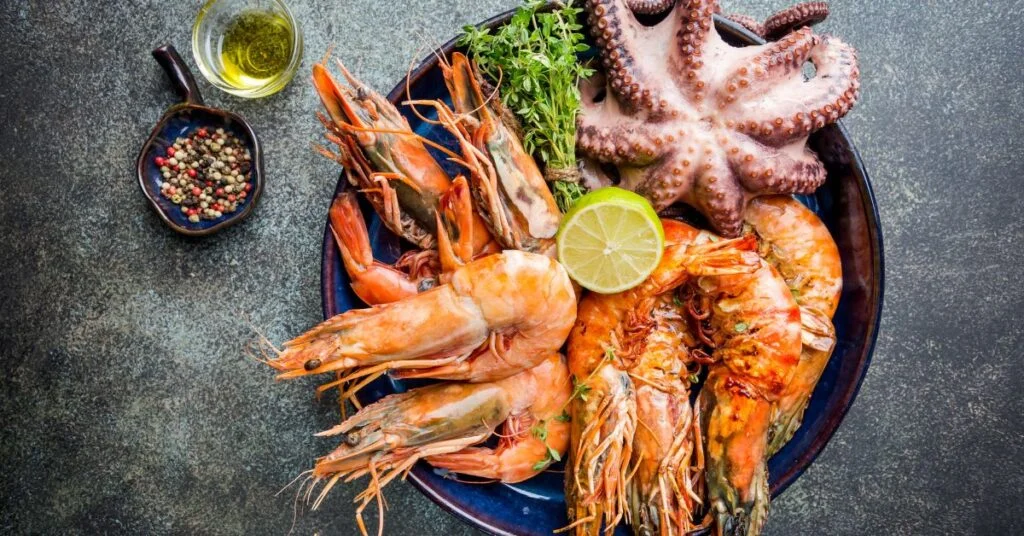An In-Depth Look at the Changing Tide of Trade, Sourcing, and Sustainability
Introduction: A Trade Strategy That Changed Everything
Back in 2018, when the Trump administration began rolling out tariffs targeting global imports, few anticipated how deeply those decisions would ripple across the world’s seafood markets. Fast forward to 2025, and the seafood industry stands transformed.
Tariffs once viewed primarily as political tools have rewritten trade routes, forced companies to rethink where and how they source seafood, and reshaped the very economics of what ends up on a dinner plate in New York or New Delhi.
In this article, we examine what really changed over the last seven years, how exporters and importers adapted, and what lessons businesses are drawing from this period of disruption and reinvention.
The Beginning: A Shift in Trade Policy
Trump’s tariffs weren’t rolled out overnight—they built gradually between 2018 and 2020. However, it wasn’t until the broad tariff escalations of 2024 and early 2025 that the seafood industry began to feel the real heat.
Chinese seafood imports were hit with tariffs as high as 145 percent, effectively pricing them out of the U.S. market. Indian shrimp—long a staple of U.S. imports—suddenly came with a 26 percent tax. Even widely consumed items like tilapia saw duties exceeding 200 percent in some categories.
Retailers quickly raised prices. Processors felt the pinch. And for many seafood companies, survival now depended on finding new suppliers, fast.
How the Industry Reacted: New Suppliers, New Strategy
Facing rising costs, U.S. buyers pivoted quickly. Many cut back their imports from traditional sources like China and India, instead turning to countries like Vietnam, Ecuador, and Indonesia—nations not yet pulled into the trade war.
This wasn’t just a case of swapping one country for another. It required rebuilding logistics chains, vetting new suppliers, ensuring quality standards were met, and in some cases, renegotiating contracts with grocery chains or restaurant buyers.
Larger players adapted faster. They had the capital to invest in reevaluating their supply routes, expanding cold storage, and implementing new sourcing software. Smaller importers, on the other hand, struggled to keep pace with the complexity and cost of change.
Still, by mid-2025, the industry had successfully diversified—more out of necessity than strategy.
A Global Chain Reaction
The U.S. wasn’t the only country impacted. As American buyers dropped Chinese and Indian suppliers, those exporters began looking elsewhere. China focused on expanding exports to the EU and Southeast Asia. India deepened trade ties with Japan, South Korea, and even parts of Africa.
In effect, the U.S. tariffs caused a worldwide redistribution of seafood trade. Some shipping routes became obsolete; new ones emerged. Even Arctic routes were explored by logistics firms looking to shorten transit times and reduce exposure to tariffed regions.
The result? A complete rewiring of the global seafood economy.

Environmental Consequences: More Than a Trade Issue
There’s an often-overlooked side effect of these trade shifts—what they’ve done to the oceans.
As companies scrambled to meet demand, fishing intensified in regions previously underexploited. Southeast Asia, now a dominant supplier to the U.S., saw a surge in commercial fishing. That has brought with it concerns about overfishing, depleted species, and unsustainable harvest methods.
Longer supply routes also increased emissions, adding to seafood’s carbon footprint. In response, many companies began partnering with certification bodies and environmental organizations to promote sustainable practices. But the damage in some ecosystems is already showing, and the recovery will take time.
Impact on the Consumer
For consumers, the first noticeable impact was price. Shrimp, salmon, and other household staples got significantly more expensive in the U.S. Between 2020 and 2025, some products rose in price by 25 percent or more.
To deal with rising costs, many restaurants and retailers began offering lesser-known fish like barramundi or cobia—species that could be sourced more cheaply from newer suppliers. This expanded product variety, but also created friction among customers accustomed to certain flavors and textures.
At the same time, demand for traceability and transparency grew. Shoppers wanted to know where their fish came from, how it was caught, and whether it met environmental standards. In response, brands began investing in better labeling, QR-code traceability, and storytelling that emphasized ethical sourcing.
Government and Industry Interventions
As the pressure mounted, both governments and private industry began introducing support measures.
Exporting countries like India offered subsidies to shrimp farmers and processors. Some regions streamlined compliance and inspection protocols to improve export turnaround. Meanwhile, trade negotiators pushed for new bilateral agreements to counteract U.S. tariffs.
On the corporate side, technological innovation became a lifeline. Companies integrated blockchain tools to ensure product authenticity, implemented AI-powered inventory tracking, and ramped up automation in processing plants to keep costs under control.
Aquaculture also boomed. Land-based fish farming, in particular, saw heavy investment as a way to ensure local supply while avoiding geopolitical risk.
A Split in the Fishing Industry
The tariff-driven disruption has affected small and large players differently.
Small-scale fishers, many of whom rely on imported gear or international buyers, were hit hard. Some exited the market entirely. Others pivoted to domestic customers, promoting hyper-local, sustainable catch to differentiate from mass-market imports.
Large corporations had more options. They diversified their supplier base, expanded their international operations, and invested in in-house farming and distribution. These firms are now positioned to lead in a post-tariff world—but face growing scrutiny about sustainability and ethics.
The Road Ahead
Now, in 2025, the seafood industry is more complex, diversified, and politically aware than ever. While the dust is still settling, a few clear trends have emerged:
- Companies that invested early in technology and sustainability weathered the storm best.
- The days of relying on a single-country supply model are gone.
- Consumers are now more concerned with where their seafood comes from than ever before.
- Environmental accountability is no longer optional—it’s a competitive edge.
What began as a series of trade policies has become a structural transformation of an entire global industry.
Final Thoughts: Adapting to a New Normal
The seafood industry has always been global, but now it must also be agile. Tariffs may come and go, but the lessons of the past seven years are clear: resilient supply chains, transparent sourcing, and environmental responsibility are no longer luxuries—they are business imperatives.
For seafood businesses worldwide, 2025 is not a return to normal. It’s the start of a new era.

